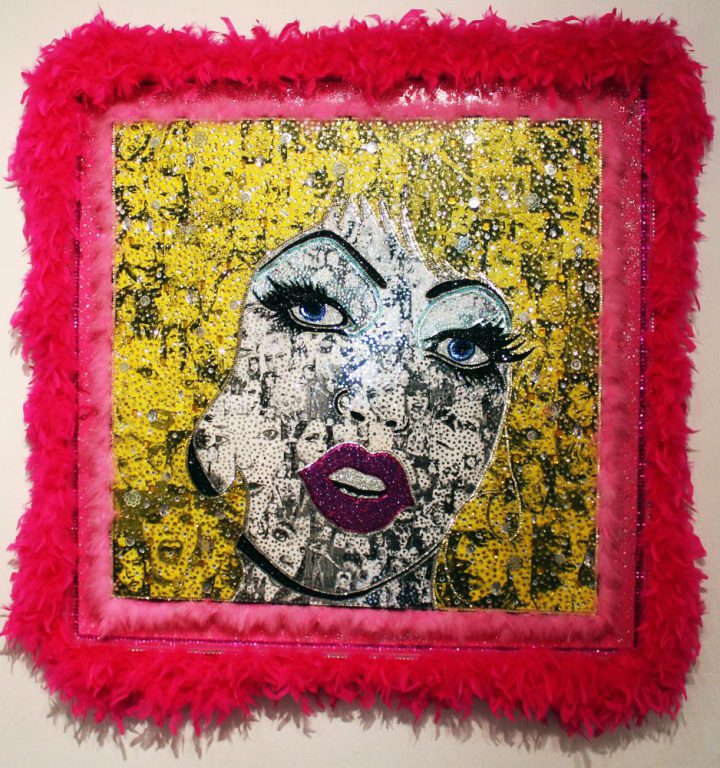
Top ten LGBTQ+ objects
Kay jones picks out ten objects from the Museum of Liverpool's collection that highlight LGBTQ+ Histories.
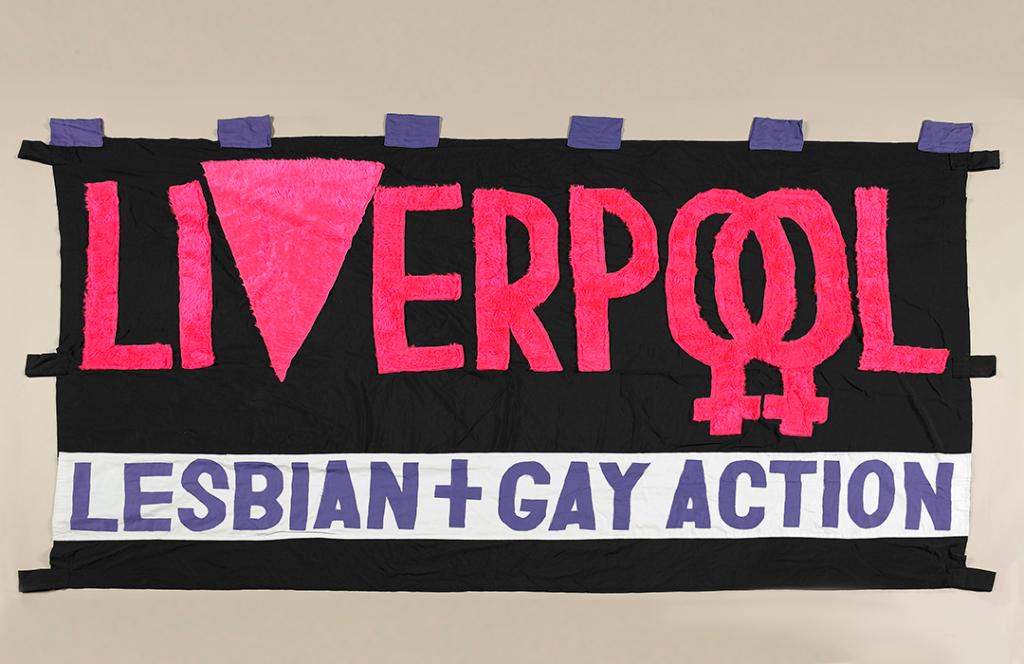
Liverpool Lesbian and Gay Action banner
We welcome any lesbians or gay men who wish to actively fight heterosexism and sexism and are opposed to all forms of racism and ableism.
Liverpool Lesbian and Gay Action, 1990
Liverpool Lesbian and Gay Action was a political group made up of lesbians and gay men. The group challenged and fought heterosexism through campaigning, being out, direct action and ‘generally having a good time’. They were based at the Mutual Aid Centre, Seel Street.
The organisation came out of Liverpool Stop The Clause which was formed in 1988 to fight the introduction of Clause 28 of the Local Goverment Bill. Liverpool Lesbian and Gay Action did many things including –
- Lobbying local union branches about their lack of Equal Opportunities policies
- Raising money for ambulance workers on strike
- Lobbying Liverpool City Council to request a Lesbian and Gay Sub-Committee
- Helping to organise Liverpool Lesbian and Gay Pride
The banner, made by Dawn Brayford and Pura Ariza, was used at London Pride and many other demonstrations in Manchester and Liverpool.

‘The Icon - Lady Seanne’
Artist Ben Youdan created this artwork of her in 2017. He explains the inspiration behind it,
Quite simply there is nobody quite like Lady Seanne. She is a truly unique presence and an icon of Liverpool’s gay scene. I have had the pleasure of knowing her for many years and she has been a constant source of inspiration to me.
The art of Drag is fascinating, dynamic and multifaceted, it can be illusionary and real, a mask or a truth and is a powerful statement of self-expression and a force to be reckoned with. Drag queens are warriors, mothers, sisters, lovers, custodians and an intrinsic part of our queer community and cultural identity.
Lady Seanne is certainly all of these things and I have attempted to celebrate this in my portrait. The background collage is a visual biography of her life and work and in the main image I have tried to capture something of her unique beauty, glamour, wit, exuberance and humour."
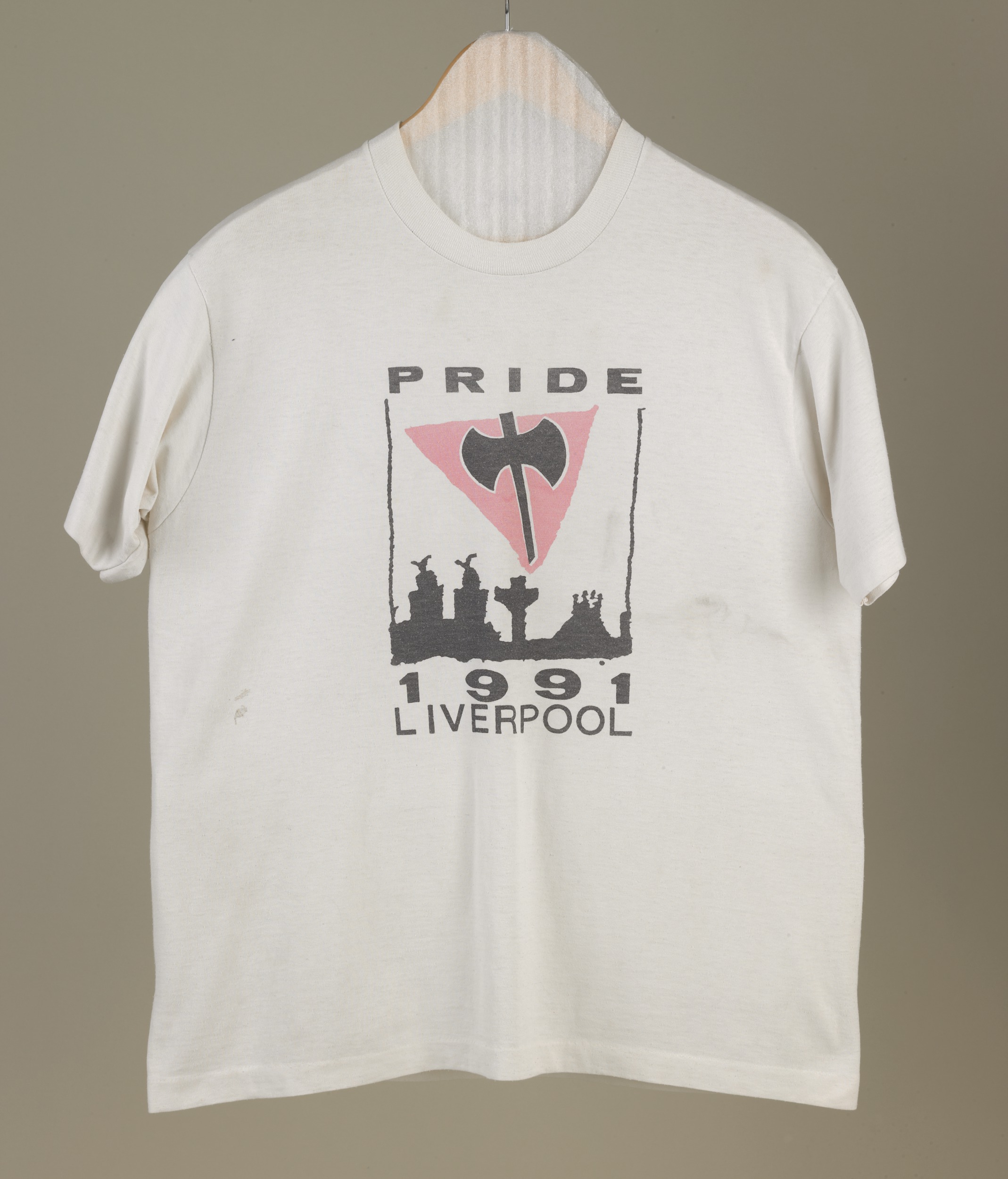
Liverpool Lesbian and Gay Pride t-shirt, 1991
For Pride 1991 we extended the events with a series of lesbian and gay films at the 051 cinema, lesbian and gay theatre production at the Unity Theatre as well as favourites from the first year such as the tea dance and karaoke night.
Dawn Brayford speaking in 2017
Dawn Brayford designed the promotional material for Liverpool Lesbian and Gay Pride 1991 following on from the previous year’s success. She was an art student at Liverpool Poly and founder member of Liverpool Lesbian and Gay Action.
Her t-shirt design features a labrys, or double-bladed battle axe. Since the 1970s it has been used to represent lesbian and feminist strength and self-sufficiency. The labrys is within a pink triangle. The pink triangle was used to identify male prisoners sent to Nazi concentration camps because of their homosexuality. The symbol has been reclaimed as an international symbol of gay pride and the gay rights movement.
Pride 1991 included a Community Pride day at the Trade Union Centre, Hardman Street, A Pride Service of Liberation and a Floating Picnic at the Mersey Ferry Terminal.
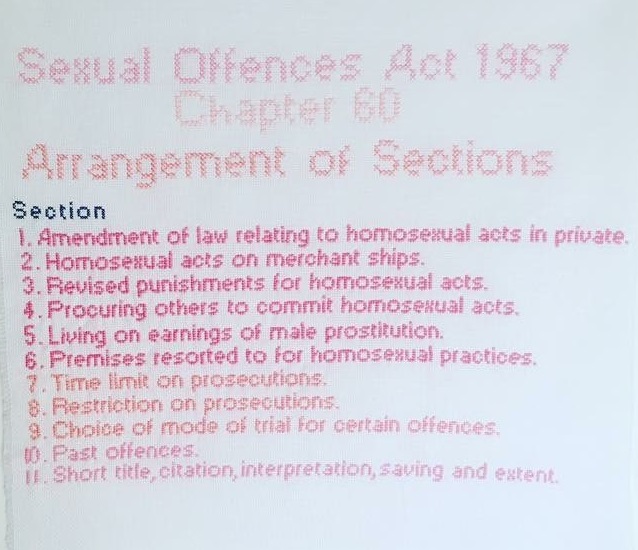
Sexual Offences Act, 1967 cross stitch by Jonathon Beaver, 2017
Local artist Jonathon Beaver created this artwork in response to the 50th anniversary of the partial decriminalisation of homosexuality in England and Wales in 2017.
Jonathon included wording from the original 1967 legislation in pink thread.
I’ve used a homely, traditional craft often used to mark family occasions or decorate family homes, to reflect on the significance of this Act for queer families and homes.
He first learned to stitch when he was a child, taught by his auntie Molly at her home in Southport during school holidays. Some of the threads used are from the 1960s and originally belonged to her.
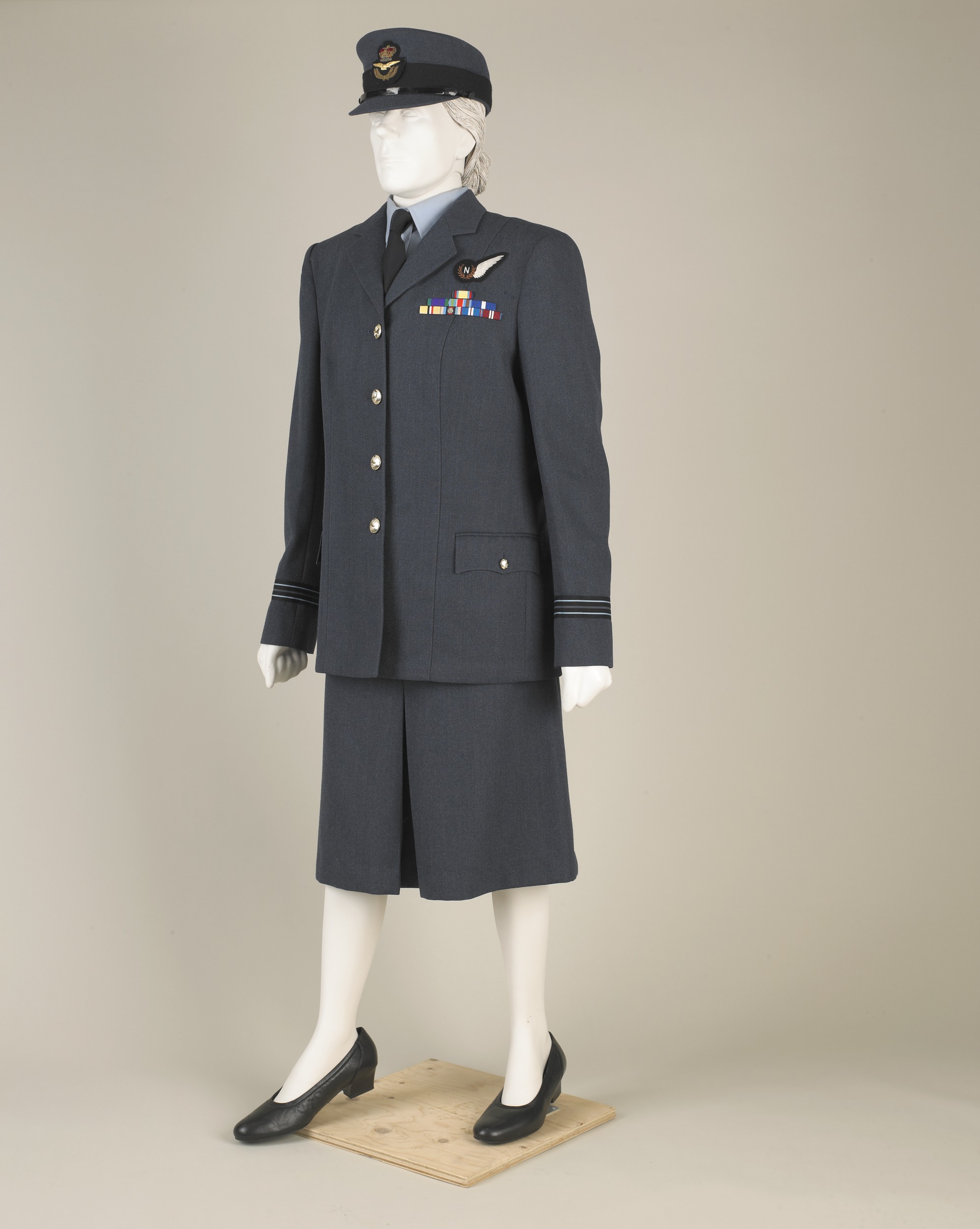
Caroline Paige’s RAF uniform
For 39 years I hid my true identity from my family and the military until I couldn’t any longer.
Caroline Paige, 2017
Flight Lieutenant Caroline Paige proudly wore this uniform from 1999 up until she left the RAF in November 2014 after 35 years distinguished service. It was issued to her when she transitioned, becoming the first openly transgender officer in the British Armed Forces.
Caroline was born in Wallasey on the Wirral in 1959 and enjoyed being a cadet at 472 Squadron in Hoylake.
Later, her service in Iraq and Afghanistan earned her commendations for exceptional service. She now teaches battlefield skills to European military helicopter crews. Caroline is also a Stonewall School Role Model and public speaker. She shares her story to inspire others and raise awareness of transgender inclusion.
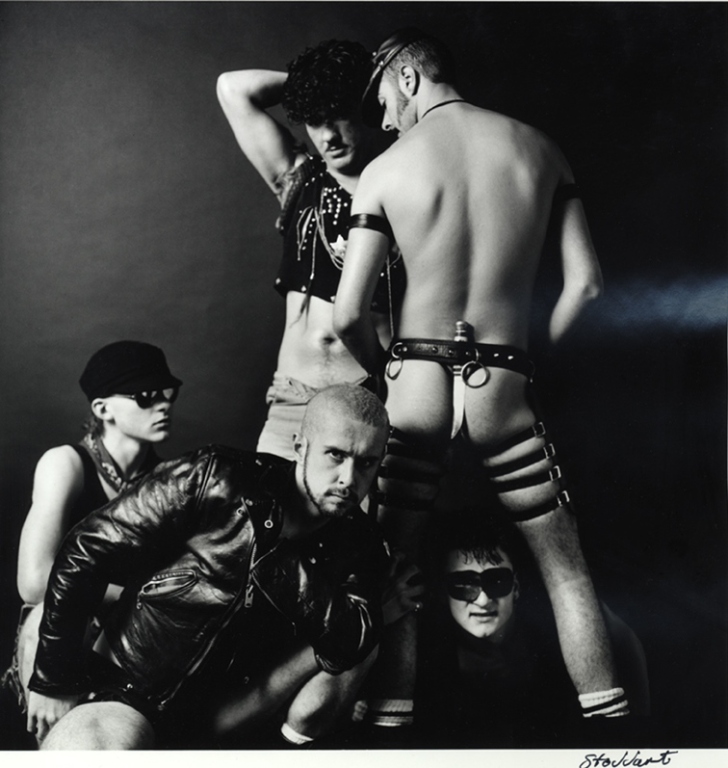
Photograph of Frankie Goes to Hollywood by John Stoddart
The photographs by John Stoddart that day gave us further ammunition to assault people’s senses with.
Holly Johnson, A Bone in My Flute, 1994
This striking image is from Frankie Goes to Hollywood’s first photo session in 1982. The photographer was Liverpudlian John Stoddart. The shoot, in John’s studio, was designed to attract record company attention. The band pulled out all of the stops, using as much bondage clothing they could find to create sex and spectacle.
It was this dangerous, perhaps even threatening style - the fetishes and the eroticism - that was to form the ‘Frankie’ style, introducing something new into mainstream pop culture.
Holly Johnson, lead singer.
Frankie Goes to Hollywood became infamous when their first single, Relax was banned by the BBC in 1983 for its overtly sexual lyrics and video which was set in a club populated by Leathermen and drag queens.
The group became only the second act in the history of the UK charts to reach number one with their first three singles - Relax, Two Tribes and The Power of Love. In 1985 they won the Brit Award for Best British Newcomer. The band also received Grammy Award and MTV Video Music Award nominations for Best New Artist.
© John Stoddart
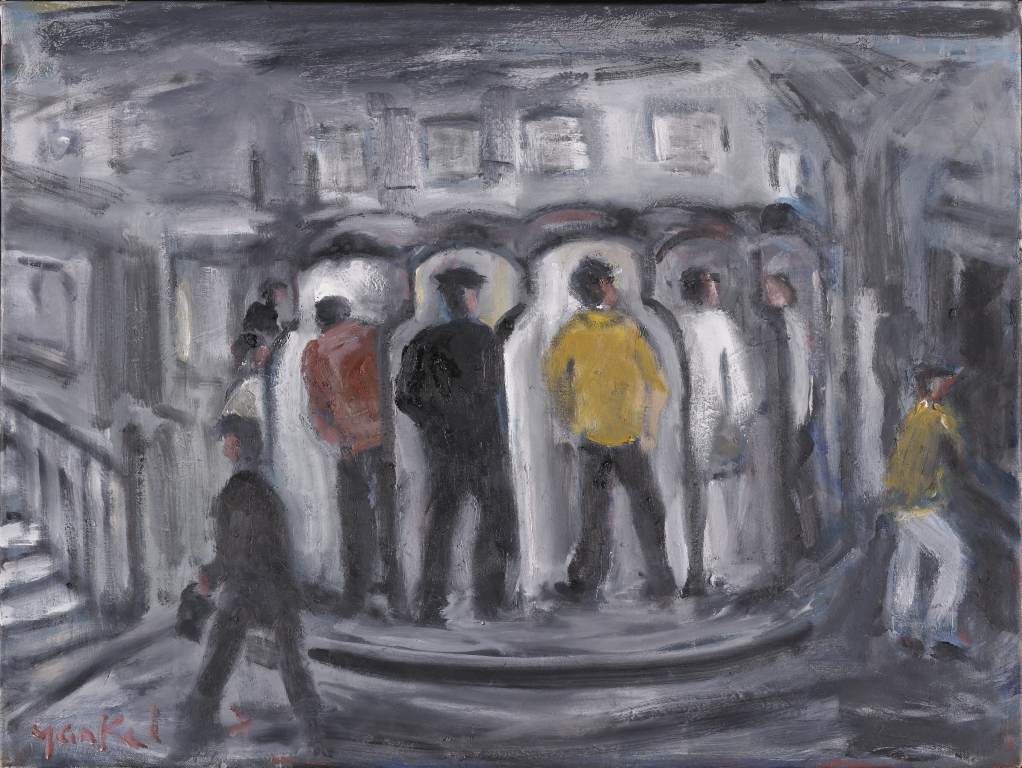
The Wheel of Fortune, by Yankel Feather
This painting, by gay Liverpool-born artist Yankel Feather, depicts men cottaging (looking for sexual partners in public toilets) in the ‘Wheel of Fortune’ underneath Williamson Square in the years prior to the partial decriminalisation of homosexuality in England and Wales in 1967.
One local man remembers,
Williamson Square was where the Playhouse is now and there used to be a little taxi place there. There was a kiosk for the taxi drivers to get a cup of tea and what not. Then just behind the hut was a public convenience for gentlemen only and it had two staircases going down each side of it and it was round inside so that’s why it was called the 'wheel of fortune'. A lot of people used to go in there looking to see if they could find a rich sugar daddy! And they’ll have got a fortune out of him, hopefully, but no one ever did.
Anonymous, 2011, extract from Mapping Memories, Merseyside Maritime Museum
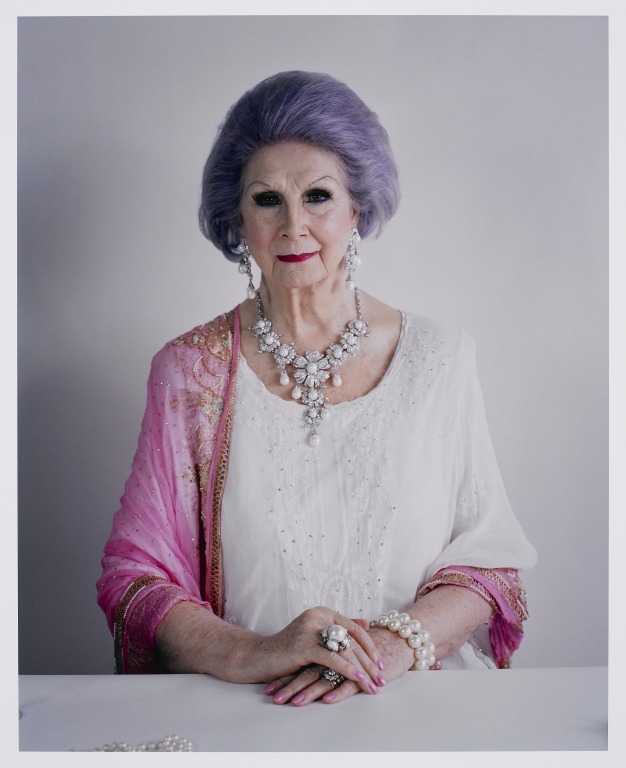
Portrait of April Ashley by Tim Walker
45 years and four months after I became the woman I wanted to be, I had a piece of paper to prove I really am April Ashley. I feel free at last.
April Ashley, 2005
April Ashley was born George Jamieson, in Liverpool, 1935. Although identified as male at birth, April always felt and looked like a girl. Childhood was a lonely and traumatic time.
By her early twenties, she was finally able to accept and reveal her true identity. In 1960 April was one of the first people in the world to undergo pioneering gender reassignment surgery. She later went on to become a Vogue model and an actress.
April is one of the most famous transgender individuals and a campaigner for transgender equality, especially in relation to the Gender Recognition Act 2004. In 2012 she was appointed a Member of the Order of the British Empire (MBE).
This 2010 portrait, by Tim Walker, was first displayed in the Museum of Liverpool’s exhibition, April Ashley: Portrait of a lady. It was later presented to the Museum on Transgender Day of Remembrance, 2015.
© Tim Walker
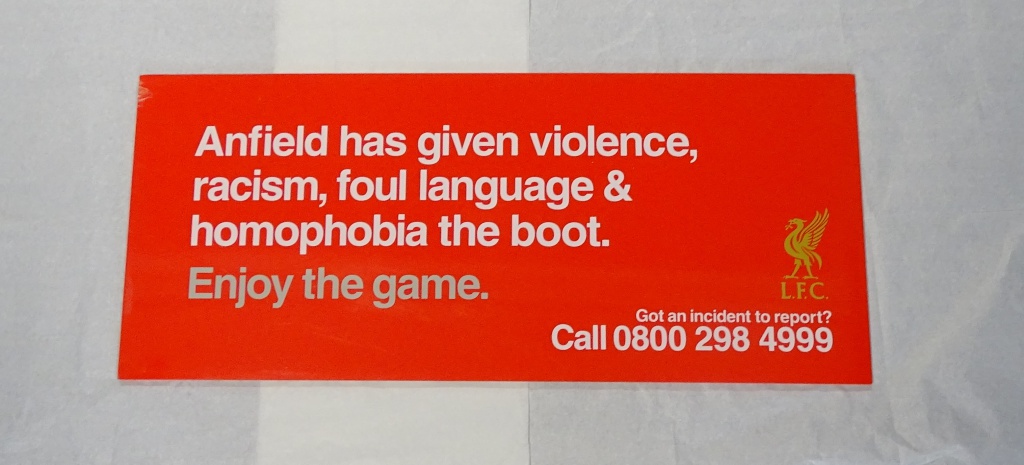
Sign, 'Anfield has given violence, racism, foul language & homophobia the boot'
This sign was installed at Anfield Stadium in 2011 following a request to the club from Paul Amann, founder of Kop Outs – the LGBT Fan Group for Liverpool FC.
It was the first sign displayed in a Premier League club stadium to include homophobia.
At the first Liverpool Supporters’ Committee I put it to the owners that the club had a responsibility to treat homophobia as seriously as racism in line with the ground regulations. I asked that they use inclusive advice on fan behaviour. The owner's agreed to the request and changed stadium announcements that very day. A few months later, the new signage was introduced giving a clear statement of the club's commitment in treating homophobia seriously.
Paul Amann, 2017
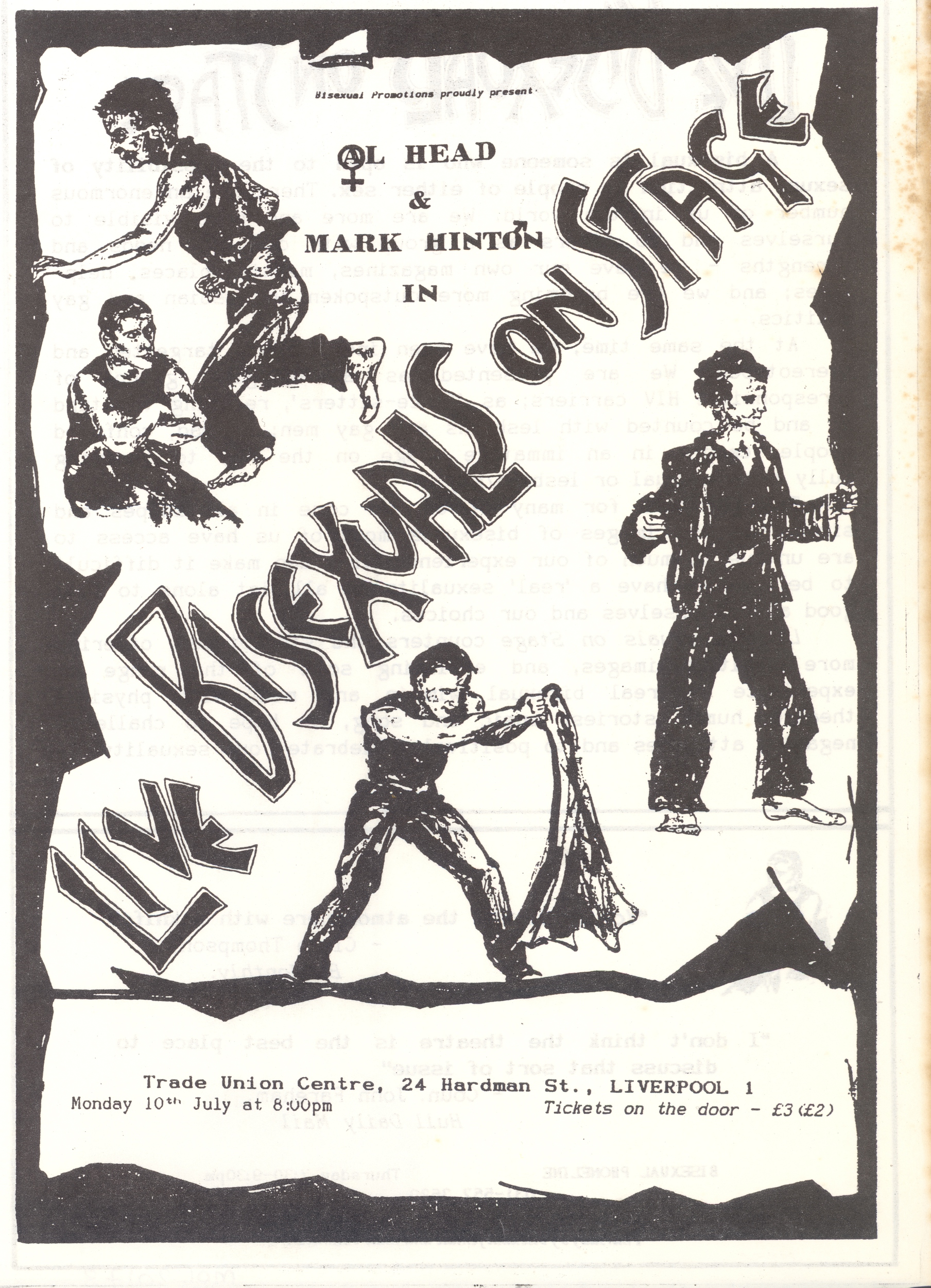
Bisexual Promotions proudly present: Live Bisexuals on Stage
"Live Bisexuals on Stage was one of a series of performance events around the country to help spread the word of a new bisexual book, ‘Bisexual Lives’.
In the 1980s and into the 1990s the lesbian and gay press erased bisexuality, and many lesbian and gay organisations barred bi people from using services or from volunteering.
This led to separate bi organising to give bisexuals space and a voice, including books, newsletters/magazines and local support organisations. Liverpool Bi Group and later MerseyBis were short-lived groups in the city, while just up the M62 Manchester's BiPhoria, established in 1994 is still running today.”
Jen Yockney, MBE, speaking in 2017.
Jen is editor of Bi Community News and convenor of BiPhoria, the UK's longest-running bisexual community project.
